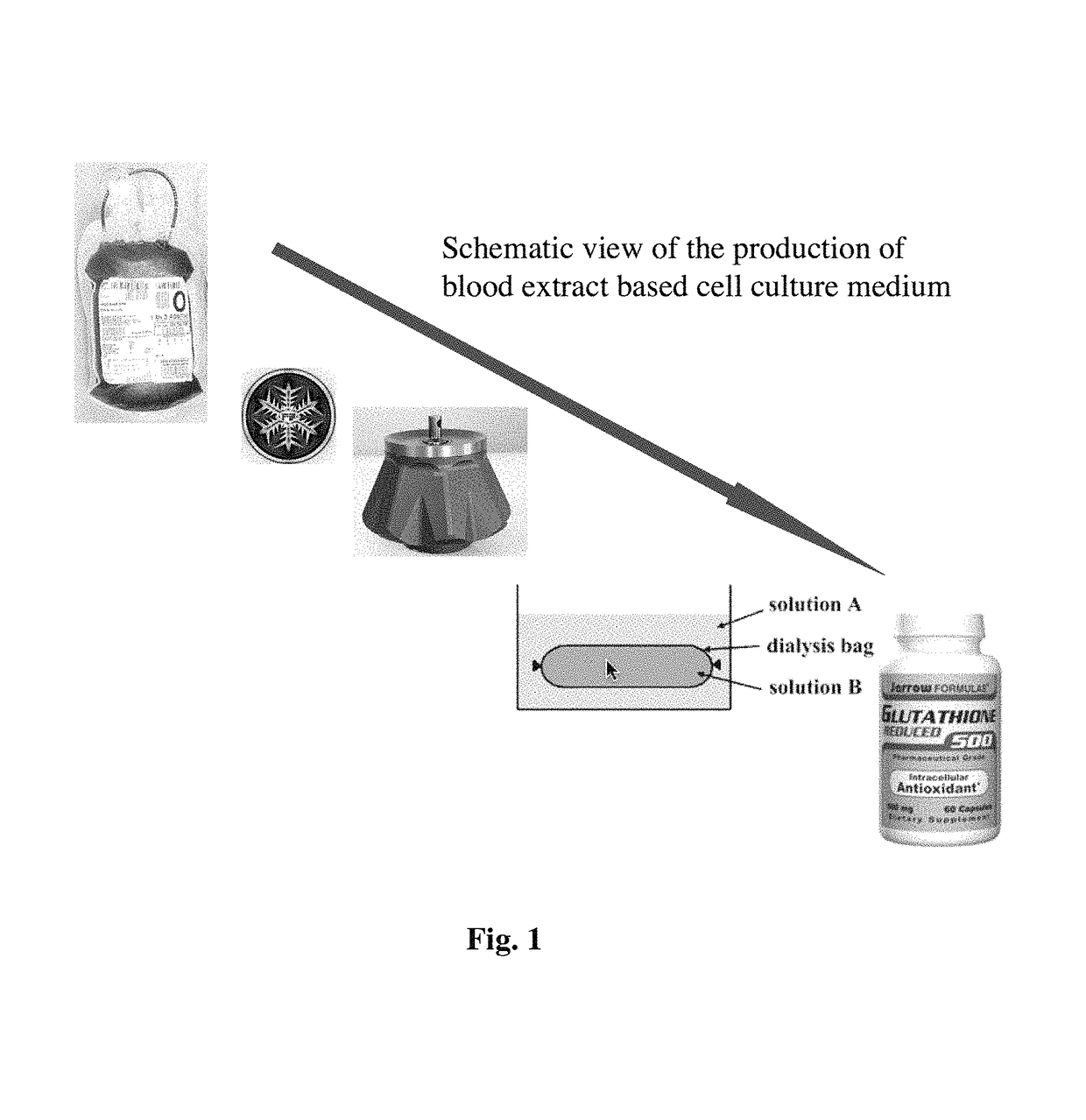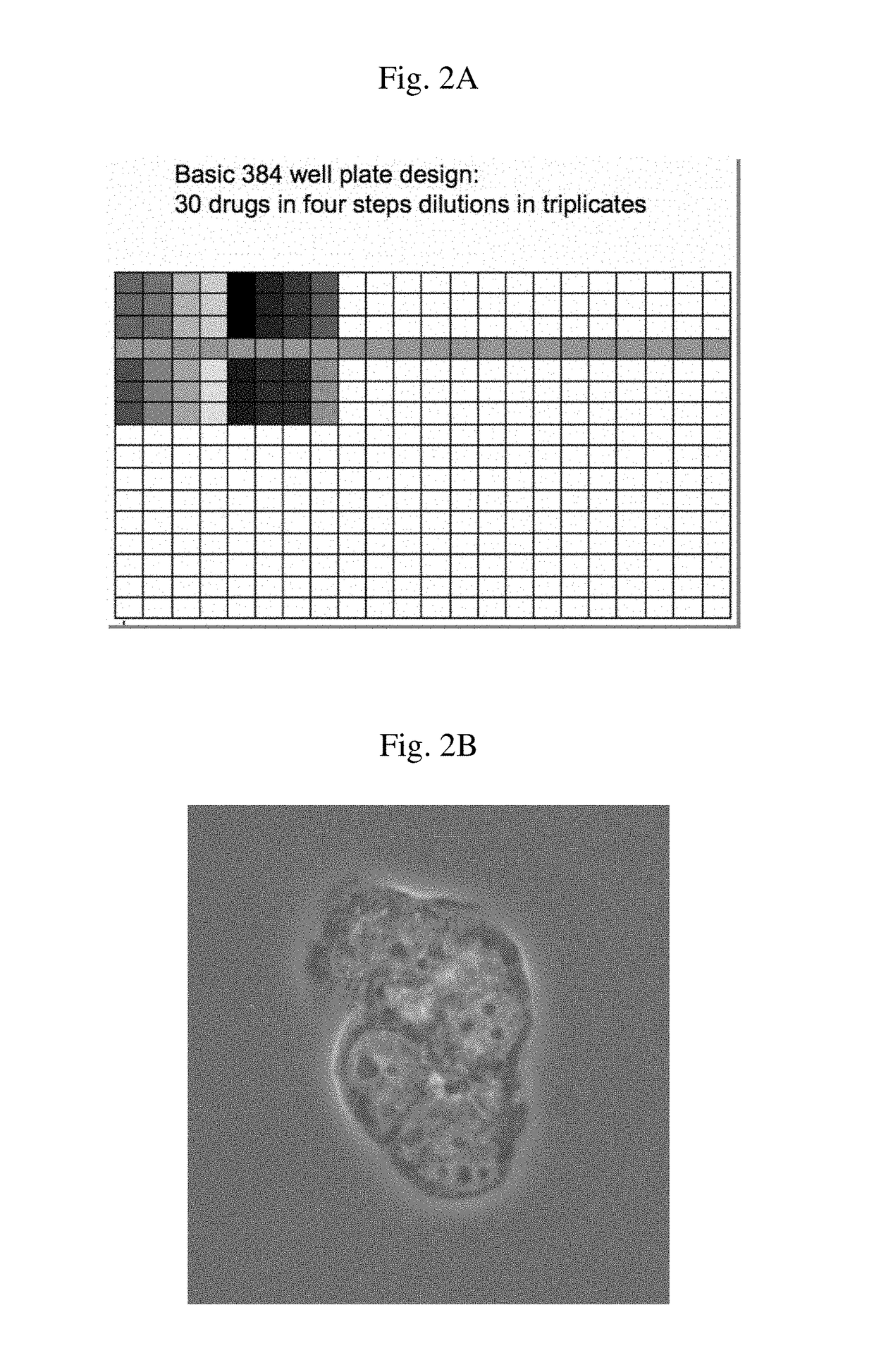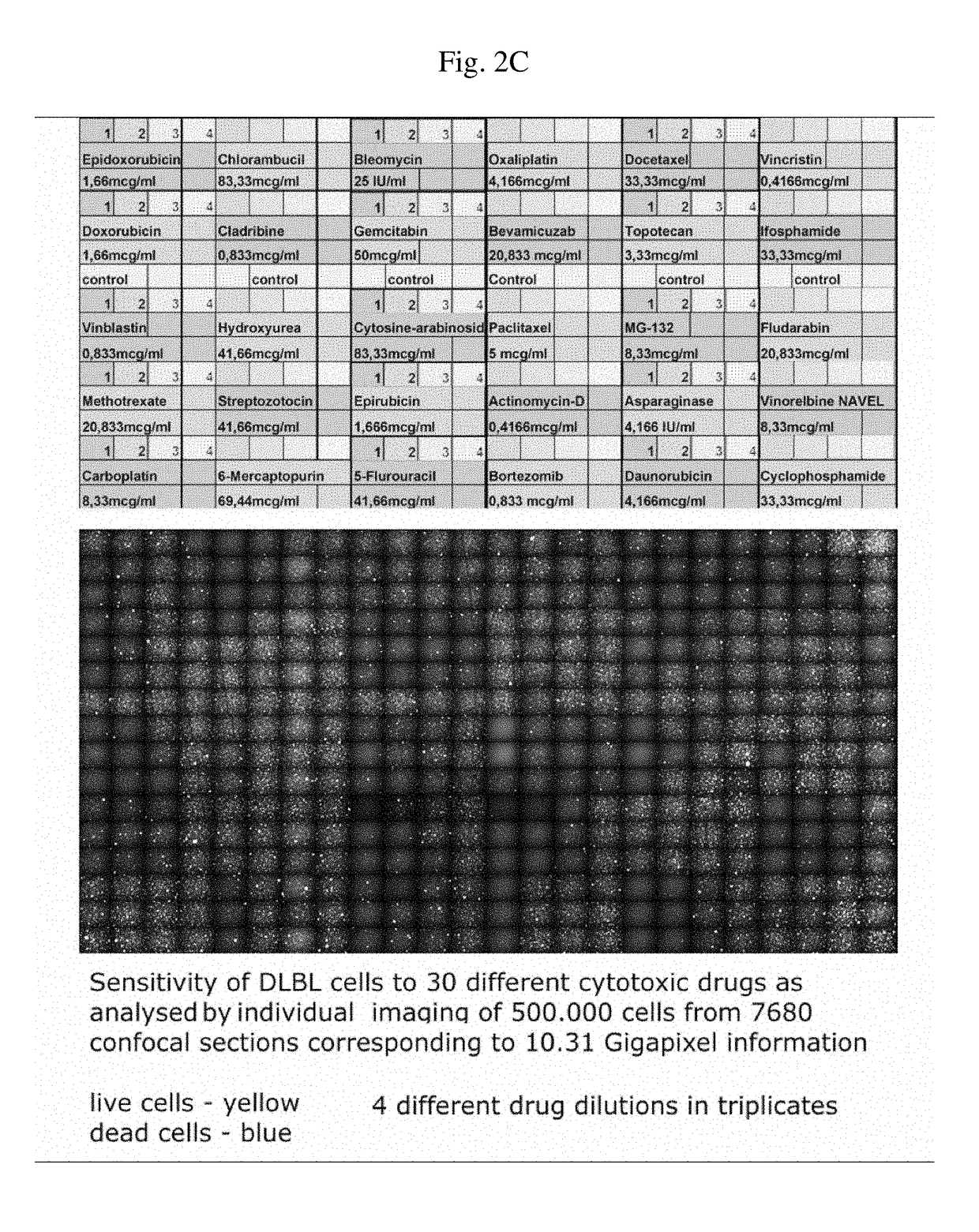Cell culture medium
a technology of cell culture and medium, applied in the field of cell culture medium, can solve the problems of insufficient critical growth and survival factors, aggressive treatment with significant toxicities, and obsolete requirements
- Summary
- Abstract
- Description
- Claims
- Application Information
AI Technical Summary
Benefits of technology
Problems solved by technology
Method used
Image
Examples
example 1
N OF TOTAL HUMAN BLOOD EXTRACT
[0057]Human blood from a healthy donor is obtained by venopuncture. Alternatively animal blood (preferentially bovine or porcine origin) is freshly collected under sterile conditions during the time of slaughter. Coagulation is prevented by adding 100 IE Heparin per ml to the collecting bag. Subsequently the red blood cells are lysed in order to release the intracellular content of the red blood cells into the plasma. In an optimal embodiment of the formulation the lysis is carried out by freezing the anti-coagulated blood to −20° C. in 50 ml aliquots, in controlled temperature freezing device to achieve the optimal and even disruption of red blood cell membranes by the help of microscopic ice crystal formation. Subsequently the frozen blood is stored at −80° C. until further processing. To correct the ion content changes, resulted by the hemolysis, and to supply small molecular weight nutrients, the lysed blood is dialysed against excess volume of cell...
example 2
ASSAY OF DRUG TREATED PRIMARY HUMAN TUMOR CELLS
[0058]Total blood lysate based cell culture medium is particularly suitable for testing the drug sensitivity of primary human cells that grow in suspension form, using short term in vitro survival assays. For this assays the cells are purified from peripheral blood, bone marrow or body cavity (peritoneal or pleural) effusions using Ficoll gradient centrifugation. In the regular setup of the assay, ten ml body fluid is treated with 100 IE / ml heparin in order to prevent coagulation. The fluid is overlayed on 5 ml LymphoprepR (Frezenius Kabi Norge AS) cushion and centrifuged for 10 minutes at 2500 rpm.
[0059]The cells from the gradient interphase are collected and washed with pre-warmed cell culture medium containing 20% human serum. The quality and tumor cell content of the sample is checked and documented using phase contrast microscopy. If the tumor cell count is below 70% the cells are further purified by negative selection using an app...
example 3
N WITH CLASSIC CELL CULTURE MEDIA (DECREASED DRUG SENSITIVITY)
[0063]Incubation of primary human carcinoma and leukemia cells in blood extract based and conventional medium consistently yielded higher overall survival rate and decreased sensitivity to the cytotoxic effects of different anti-cancer drugs. (FIG. 8)
PUM
| Property | Measurement | Unit |
|---|---|---|
| molecular weight | aaaaa | aaaaa |
| volumes | aaaaa | aaaaa |
| molecular weight | aaaaa | aaaaa |
Abstract
Description
Claims
Application Information
 Login to View More
Login to View More - R&D
- Intellectual Property
- Life Sciences
- Materials
- Tech Scout
- Unparalleled Data Quality
- Higher Quality Content
- 60% Fewer Hallucinations
Browse by: Latest US Patents, China's latest patents, Technical Efficacy Thesaurus, Application Domain, Technology Topic, Popular Technical Reports.
© 2025 PatSnap. All rights reserved.Legal|Privacy policy|Modern Slavery Act Transparency Statement|Sitemap|About US| Contact US: help@patsnap.com



